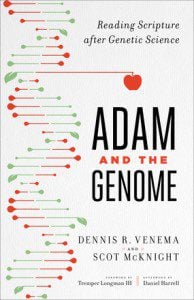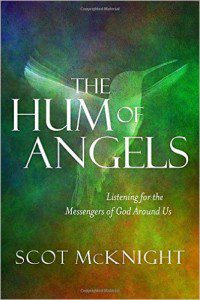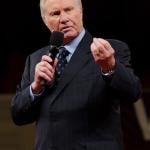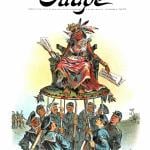 Nine traits of intelligent leadership. “The model is based on an enneagram, a nine-pointed diagram within a circle that dates to 2500 BC in Babylon. These days, it is used for charting personalities, with each element corresponding to a distinct way of thinking, feeling, and behaving. It correlates with other well-known personality and behavioural systems, but Mr. Mattone believes it provides more granular details about leadership development. The circle divides evenly into three groups of leaders: Heart leaders, head leaders, and gut leaders. If you stalled on trying to place yourself in that schema, there’s a reason: Everyone is guided by their heart, head and gut. At the same time, everyone has a tendency to predominantly rely on one of those aspects of their being in their leadership. In turn, each of those three forms of leadership breaks down into three possibilities. Heart leaders tend to be helpers, entertainers, or artists. Head leaders tend to be activists, disciples or thinkers. Gut leaders tend to be drivers, arbitrators, or perfectionists. In the end, one of those nine traits is your predominant behaviour, but the other eight are still part of your composition. As you mature, you evolve between traits.”
Nine traits of intelligent leadership. “The model is based on an enneagram, a nine-pointed diagram within a circle that dates to 2500 BC in Babylon. These days, it is used for charting personalities, with each element corresponding to a distinct way of thinking, feeling, and behaving. It correlates with other well-known personality and behavioural systems, but Mr. Mattone believes it provides more granular details about leadership development. The circle divides evenly into three groups of leaders: Heart leaders, head leaders, and gut leaders. If you stalled on trying to place yourself in that schema, there’s a reason: Everyone is guided by their heart, head and gut. At the same time, everyone has a tendency to predominantly rely on one of those aspects of their being in their leadership. In turn, each of those three forms of leadership breaks down into three possibilities. Heart leaders tend to be helpers, entertainers, or artists. Head leaders tend to be activists, disciples or thinkers. Gut leaders tend to be drivers, arbitrators, or perfectionists. In the end, one of those nine traits is your predominant behaviour, but the other eight are still part of your composition. As you mature, you evolve between traits.”
Shauna Niequist’s very honest lessons on dealing with criticism.
Speaking of criticism, read this post by Kathy Escobar, which is a testimony to the fortitude of women in ministry:
We have to stand up every time we get knocked down.
We have to stand up when we feel like maybe we were meant to crawl.
We have to stand up when shame flushes our face.
We have to stand up when we hear a voice in our head that tells us we are supposed to sit.
We have to stand up even when our legs are so very tired.Because there are far more pressing issues for women in this world than whether or not we can preach from the front of North American churches, and we need an army of women who will get off their knees and stand up for dignity, equality and restoration in this broken world.
Brain exercises: “To keep their bodies running at peak performance, people often hit the gym, pounding away at the treadmill to strengthen muscles and build endurance. This dedication has enormous benefits—being in shape now means warding off a host of diseases when you get older. But does the brain work in the same way? That is, can doing mental exercises help your mind stay just as sharp in old age? Experts say it’s possible. As a corollary to working out, people have begun joining brain gyms to flex their mental muscles. For a monthly fee of around $15, websites like Lumosity.com and MyBrainTrainer.com promise to enhance memory, attention and other mental processes through a series of games and brain teasers. Such ready-made mind exercises are an alluring route for people who worry about their ticking clock. But there’s no need to slap down the money right away—new research suggests the secret to preserving mental agility may lie in simply cracking open a book. The findings, published online today in Neurology, suggest that reading books, writing and engaging in other similar brain-stimulating activities slows down cognitive decline in old age, independent of common age-related neurodegenerative diseases. In particular, people who participated in mentally stimulating activities over their lifetimes, both in young, middle and old age, had a slower rate of decline in memory and other mental capacities than those who did not.”
Mary Bowser, the internet, and careful research: “The story of the mistaken Mary Bowser reveals how an interest in history, especially women’s history and black history, can blind us to how much about the past remains unknowable. The paradox of the information age is that our unprecedented access to information feeds an expectation that every search will yield plentiful — and accurate — results. But the type of evidence that our 21st-century sensibilities most desire may be the least likely to exist. Uncovering the past is arduous work: Compare the ease with which an Internet search turns up the falsely labeled, cropped image of Mary Bowser with the number of sources I persistently contacted over a period of several years before locating the original cabinet card. Alas, in the age of the Internet, it may prove nearly impossible to curtail the use of that image as an avatar for the elusive slave-turned-spy, despite the definitive proof that it isn’t her.” (HT: CB)
The real money is in teaching: “Software programming? Yeah it’s an okay way to make a living. But the real money is in teaching. Or at least that’s the recent experience of Scott Allen, a programmer and teacher the tech-y online education platform Pluralsight.com. Allen has earned more than $1.8 million through fees and royalties from Pluralsight over the last five years. He says each monthly royalty check has increased in size over that period — the smallest increase being 10 percent month-over-month. That far outdid his expectations when he started making educational videos for Pluralsight. “It’s amazing,” he says.”
Harper Lee — a report: “Who would have predicted that, in her late 80s, Harper Lee would have to file suit to get the control of “To Kill a Mockingbird” returned to her? According to a lawsuit filed in May, Lee, in failing health, had been “duped” into assigning the copyright of her Pulitzer Prize-winning novel to her literary agent, a lawyer. That’s no small thing: A half century after its publication, “To Kill a Mockingbird” still sells more than 750,000 copies a year. In one typical six-month period in 2009, its royalties amounted to more than $1.6 million.”
The burrito pillow.
Church of England’s Bishops meet to discuss the church in England over the next two decades. “Bishop Steven Croft told Synod members the Church of England needed a “more outward focus” that implied action as well as reflection. He welcomed the rise in the number of younger vocations to ordained ministry, to 113 candidates under 30 in 2011, the highest figure since 1992. However, he said there needed to be more diverse vocations and more from different ethnic backgrounds. The bishop admitted the area of growing the Church and of making disciples was the “most challenging” out of the three goals. “The Church all over the world is having a similar conversation about the challenge of passing on the Christian faith in a global secular culture,” he said. “We urgently need to deepen that conversation in our own Church.” He urged the Church to pursue serving the common good, transforming ministry, and making disciples “with passion, with hope, with resources, and with courage”. “We need to recover the simple, deep disciplines of learning and teaching the faith to make disciples in annual rhythms and patterns in every parish throughout the land.”
Edmund S. Morgan, one of America’s best Puritan scholars, dies. “As a historian of colonial and revolutionary America, he was one of the giants of his generation, and a writer who could well have commanded a larger nonacademic audience than I suspect he received,” said Pauline Maier, a professor of American history at the Massachusetts Institute of Technology. “He characteristically took on big issues and had a knack for conveying complex, sophisticated truths in a way that made them seem, if not simple, at least easily understandable.” Professor Morgan’s book “The Puritan Dilemma: The Story of John Winthrop” (1958) was for decades one of the most widely assigned texts in survey courses on American history. His “Visible Saints: The History of a Puritan Idea” (1963) showed his unmatched talent for mining primary sources to illuminate an important concept, in this case the change in understanding among New Englanders of what it meant to be the member of a church.”
History of bread: “By the beginning of the Middle Ages the preference was to eat white bread made from wheat – medieval physicians also recommended it as being the healthiest – but poorer peoples would bake darker breads with oats or rye. If one needed too, people could also add rice, peas, lentils, chestnuts, acorns or other foods into the mixture. In medieval France, most people would eat a type of bread known as meslin, which was made from a mixture of wheat and rye. Writing from Baghdad in the 10th century, Ibn Sayyar al-Warraq, gives his thoughts on the best kinds of bread to eat:
Wheat bread agrees with almost everybody, particular varieties made with a generous amount of yeast and salt and allowed to fully ferment and bake well. Such breads are lighter and digest faster. Jizmazaj (thin bread with tamarisk seeds) and ruqaq (very thin bread) are by comparison less nourishing and digest much faster. Bread baked in malla (pit with hot ashes and stones), tabaq (large flat pan) and any other similar varieties that do not ferment or bake well are hard to digest and cause stomach aches. Only people used to strenuous labor can eat them more often.
Terrence Scully notes “that bread was the basis of the medieval diet” and the amount that people ate throughout Europe was remarkably similar. He finds that records from England, France and Italy that workmen, soldiers and even patients in hospitals were supposed to get about two pounds of bread per day.”
How to talk like a founding father, and one way is to use this word: “mickle (n.): a large sum or amount, chiefly used in the proverbs “many a pickle makes a mickle” and “many a mickle makes a muckle.” In 1793, Washington referenced the Scottish adage that “Nothing in nature is more true … [than] many mickles make a muckle.” Predecessors of mickle include the Old Saxon mikil and Middle High German michel.”
Great article on Larry Doby. Speaking of baseball, John Rawls, eminent thinker about justice, totally understands it.











